Did You Know?
Historical paintings and sketches, including those by British officer Lieutenant William Edwards, depict a grand watchtower at Pacco Qilo, which no longer exists—replaced by a modern overhead water tank.
25°23'10.3"N 68°22'44.3"E
Historical paintings and sketches, including those by British officer Lieutenant William Edwards, depict a grand watchtower at Pacco Qilo, which no longer exists—replaced by a modern overhead water tank.
The Best Time to Visit Sindh Province is Winters. Preferably from September to April Peak Summers (May to August) can get extremely hot with temperatures reaching higher than 40 °C . Hence Summers are not recommended.

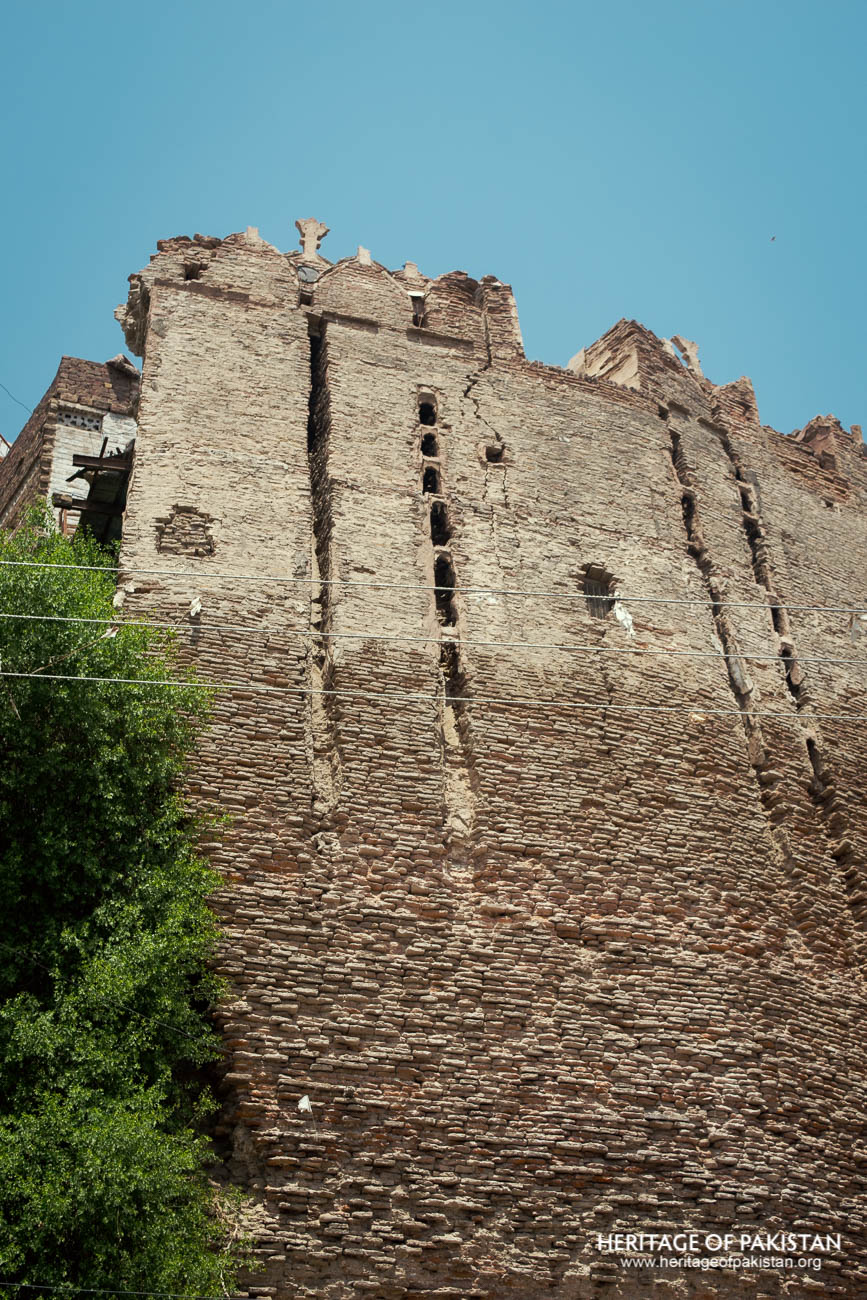
The Pacco Qilo, located in Hyderabad, Sindh, is a fort dating back to the Kalhoro era. It was constructed in 1768 under the rule of Mian Ghulam Shah Kalhoro, the fifth Kalhora ruler of Sindh. The Kalhoras governed Sindh from 1701 to 1783, marking a period of indigenous rule that followed the decline of Mughal authority in Sindh. As Mughal power waned, local powers such as the Kalhora family asserted their autonomy, thereby reshaping the political landscape of the region.
The ascendance of the Kalhoras in Sindh commenced with Mian Yar Muhammad Kalhoro, who was initially appointed by the Mughal governor of Multan to govern Bakhar in upper Sindh. His successor, Mian Noor Muhammad Kalhoro, played a crucial role in consolidating Sindh under his rule, ultimately establishing a sovereign state that received formal recognition from the Mughal court.
The origins of the Kalhora dynasty are subject to multiple historical interpretations. One account suggests that the Kalhoras were descendants of Arab migrants, tracing their lineage to two Abbasid brothers, Qaim and Ahmed, who reportedly migrated to Sindh in 261 AH (874 CE). Over generations, their descendants split into two distinct lineages: the Kalhoras and the Daupotas. Other historical perspectives argue that the Kalhoras were an offshoot of local Jat or Channa tribes, reflecting the diverse socio-political fabric of the region.
Mian Ghulam Shah Kalhora was the fifth Kalhora ruler. Upon ascending the throne, Mian Ghulam Shah Kalhoro sought to establish a new capital for Sindh. The site selection was influenced by the need for strategic defense and protection from recurrent floods. He chose a hillock within the Ganjo Takkar plateau, a decision that led to the founding of Hyderabad. The location had historical significance, as it was built over the ruins of an ancient fishing village known as Neroon or Neroonkot, which is believed to date back to the Mauryan era (322–185 BCE). The fort was constructed using pakki (burnt) bricks, a feature that gave it the name Pacco Qilo in Sindhi and Pakka Qila in Urdu. Mian Ghulam Shah’s decision to establish Hyderabad as the new capital was primarily driven by the persistent flooding in Khudabad, which had frustrated his administration. Consequently, in the late 1760s, he abandoned Khudabad and shifted the capital to the elevated terrain of Ganjo Takkar. The strategic move ensured the fortification of the city while also preserving its administrative and military stability.
The construction of the fort was overseen by chief mason Shafi Muhammad Multani, while Mirza Ahmed Khurasani supervised the overall project. The fort encompassed an enclosed area of approximately 14.56 hectares. Mian Ghulam Shah Kalhoro resided in Hyderabad for four years before his death on August 4, 1772. His son, Mian Sarfaraz Kalhoro, later commissioned his tomb on the northern edge of the Ganjo Takkar plateau.
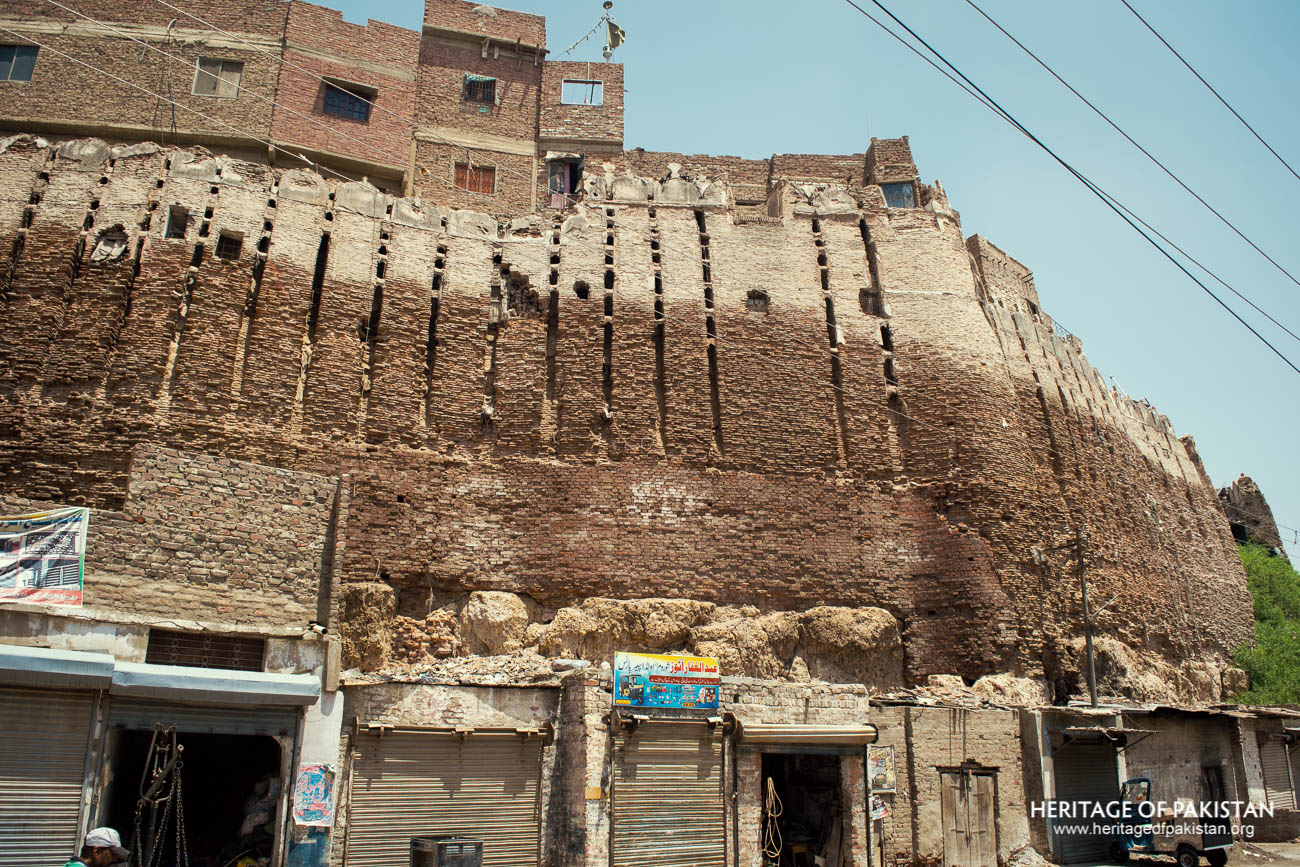
Fortification Wall of Pakka Qila, Hyderabad
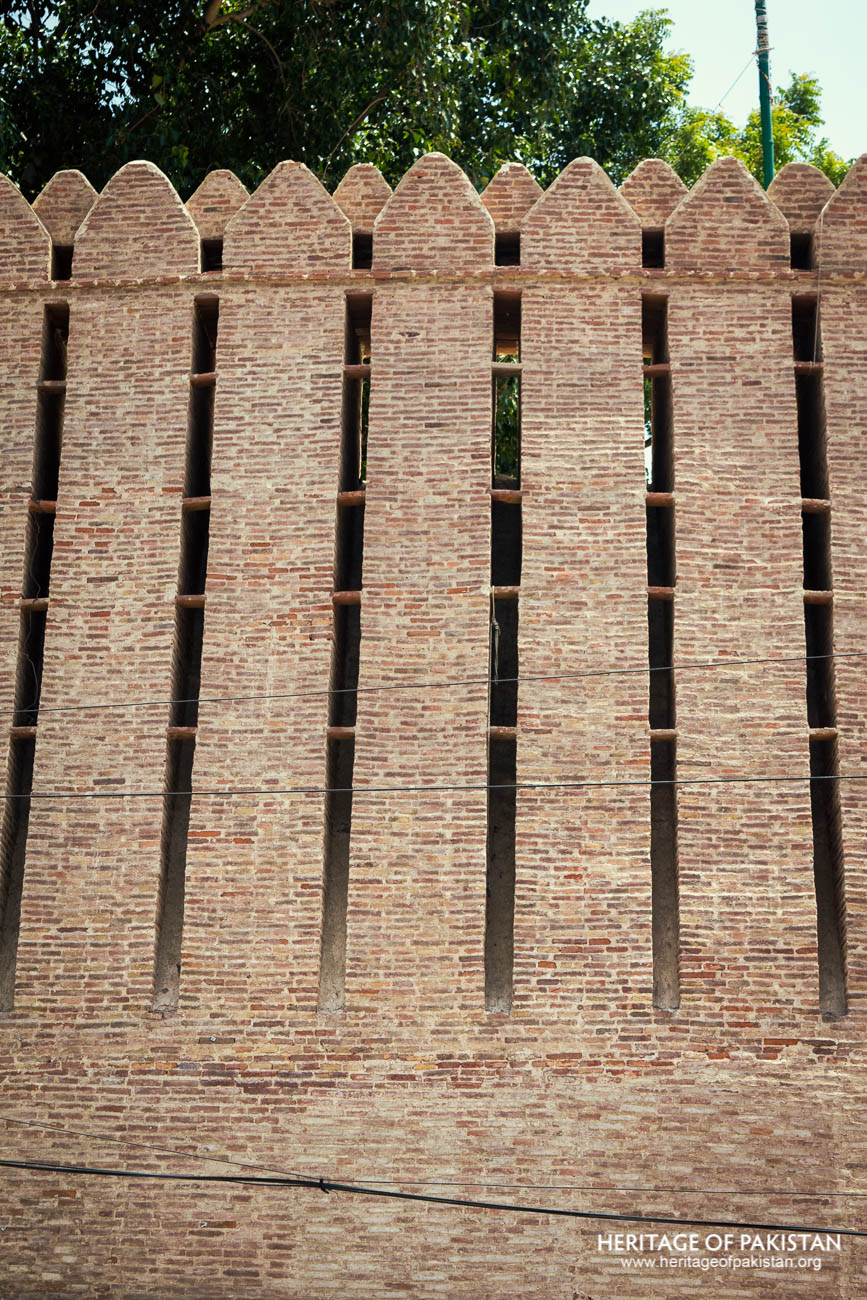
Merlons of the fortification Wall
The Kalhora rule in Sindh eventually came to an end with the rise of the Talpurs. Under the leadership of Mir Fateh Ali Khan Talpur, the Talpurs overthrew the Kalhora dynasty and assumed control of Sindh. The Talpur rulers made several modifications to the fort, including the construction of Mir Haram, a structure that remains standing today. Subsequent Talpur rulers continued to expand and develop the fort by adding various buildings and architectural enhancements, further enriching its historical legacy.
The Pacco Qilo is a great example of architectural ingenuity and historical significance of the Kalhora and Talpur periods. Over successive generations, the fort was occupied by various rulers. The Britishers demolished various parts of the fort after defeating the talpurs, including the great tower of the fort that is visible in the historical drawings of the fort. The fort currently hosts a small city in itself with evolving structures and encroachments completely replacing the forts original structures.
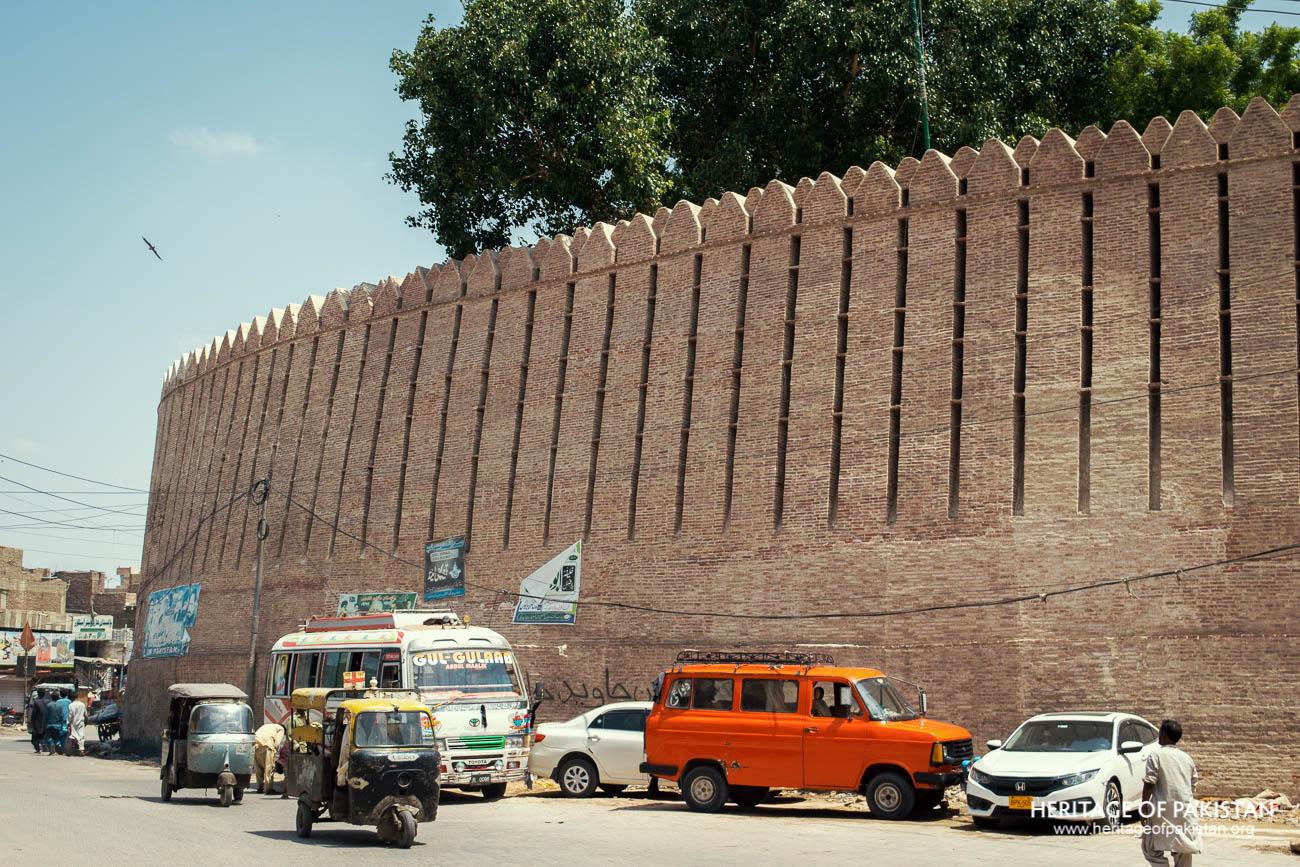
Ishtiaq Ahmed provides a detailed description of Pacco Qilo in his book "Forts of Sindh", highlighting its architectural and historical significance. The fort spans an area of approximately 14.56 hectares and is strategically positioned on a hill, making it visible from a considerable distance. This elevated location was chosen to safeguard the structure from flooding, a recurring issue in the region.
The fortification wall, which extends about 2.5 kilometers in circumference, stands at a height ranging from 12 to 15 meters. Although many sections of the wall remain intact, a significant portion has suffered damage over time. Rapid urban encroachment and unchecked construction activities pose a severe threat to the preservation of the fort.
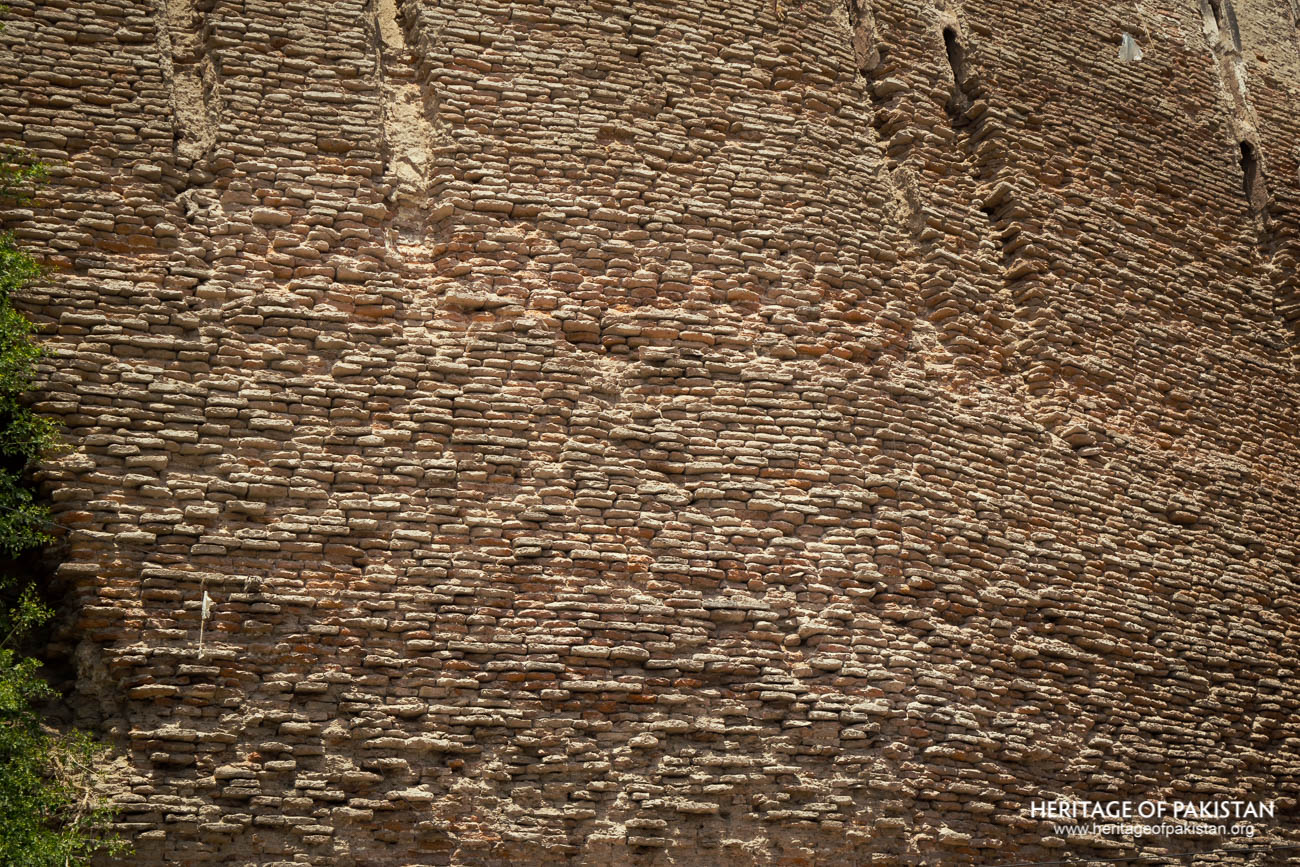
Wall of Pacco Qilo, Hyderabad
Constructed using bricks measuring 25.5 x 17.75 x 3.80 centimeters and laid in mud mortar, the fort’s walls exhibit a tapered design, with the base measuring approximately 1.52 meters in width while gradually narrowing towards the top.
A prominent feature of the fort is its massive northern gateway, which serves as the main entrance. The gate showcases a traditional four-centered arch at its center and has undergone recent restoration, now appearing in white. Inscribed on the fort near the entrance are the name of Mian Ghulam Shah Kalhoro and the date of its completion. Flanking the arched doorway are recessed panels arranged in five rows, featuring rectangular and square shapes. Above the gate, ornamental flower-shaped merlons add to the fort’s aesthetic appeal.
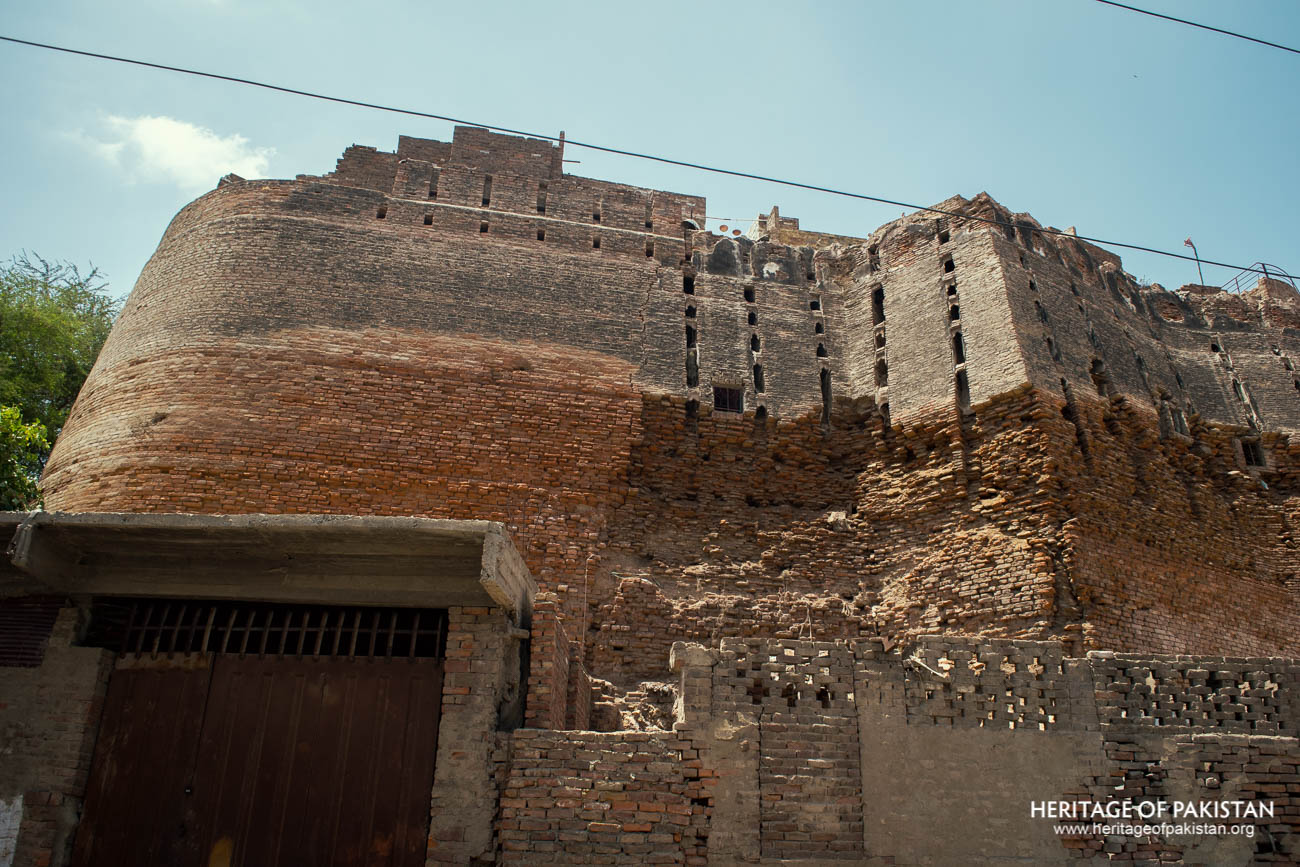
One of the most iconic features of the fort was a towering watchtower, frequently depicted in paintings from the period. Although the original structure no longer exists, historical illustrations, including those by Lieutenant William Edwards, portray it as a substantial tower crowned with a pavilion. In place of the tower, the Hyderabad Municipal Corporation has constructed an overhead water tank, which now occupies the site.
Within the fort, Mian Ghulam Shah Kalhoro commissioned the construction of several palaces, including the Shish Mahal, Diwan-e-Khaas, and Diwan-e-Aam, reflecting the architectural and cultural grandeur of the era. Following the decline of Kalhora rule, the Talpur dynasty also resided within the fort, further contributing to its historical legacy.
Despite its rich history and architectural significance, the fort faces ongoing threats due to urban expansion and neglect. Conservation efforts are essential to preserve this remarkable heritage site and ensure its continued study and appreciation by future generations.
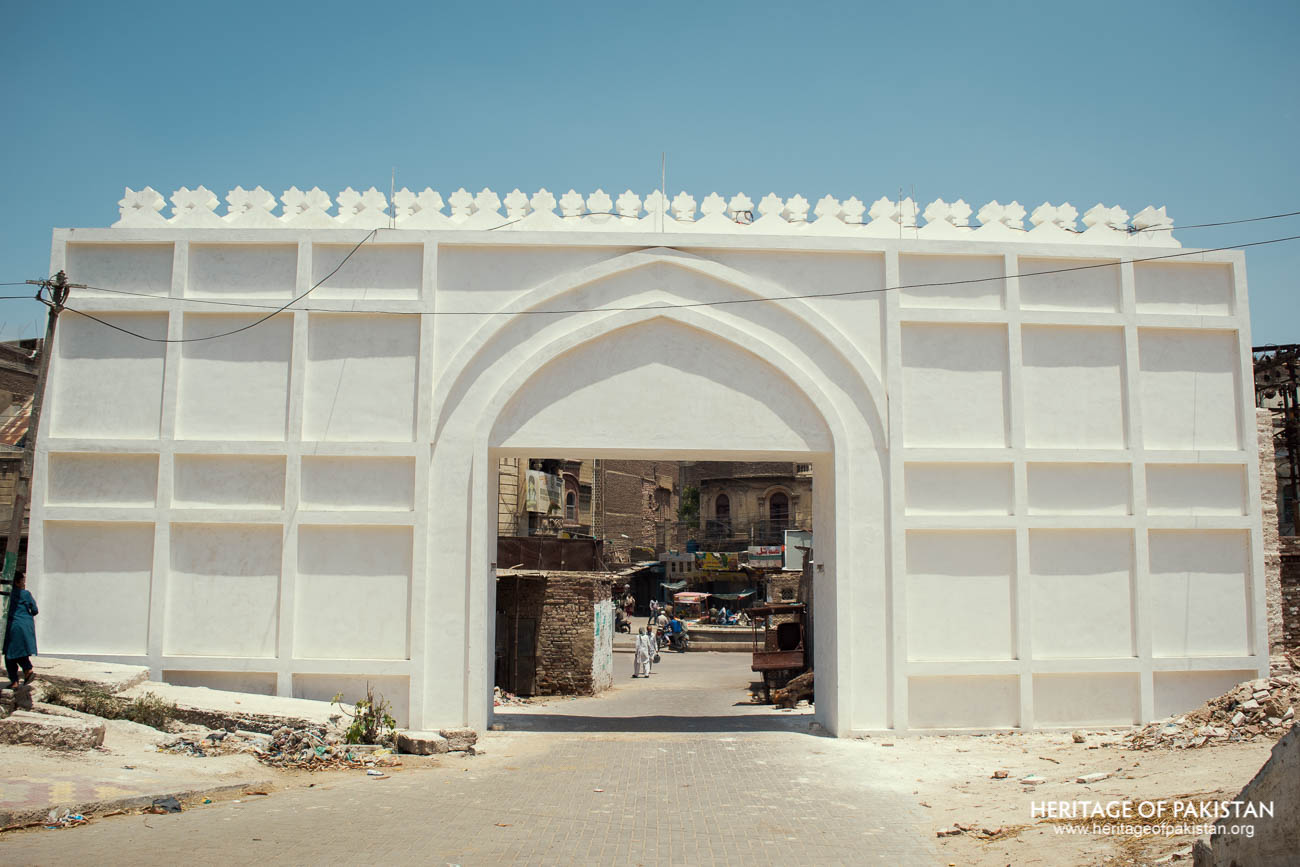

Discover the Pacco Qillo image gallery and immerse yourself in photographs

All Photographs by Syed Noor Hussain and Sania Azhar.
All Rights Reserved. Photos may be used for Non-Commercial, Educational, Artistic, Research, Non-Profit & Academic purposes.
Commercial uses require licensing agreement.


Add a review